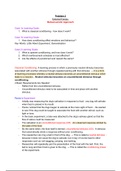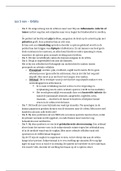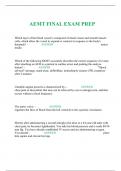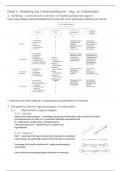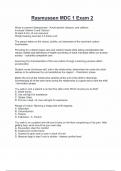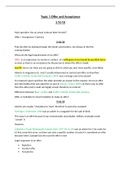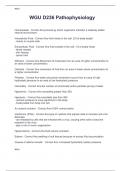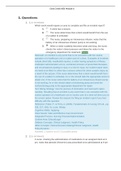External Forces:
Behaviouristic Approach
Case 1a Learning Goals:
1. What is classical conditioning - how does it work?
Case 1b Learning Goals:
1. How does conditioning affect emotions and behaviour?
Key Words: Little Albert Experiment, Generalisation
Case 2 Learning Goals:
1. What is operant conditioning, and how does it work?
2. Which reinforcement schedule is most effective?
3. Are the effects of punishment and reward the same?
Classical Conditioning: A learning process in which a previously neutral stimulus becomes
associated with another stimulus through repeated pairing with that stimulus. → It is a form
of learning processes whereby a neutral stimulus becomes an unconditioned stimulus which
leads to a reaction…Neutral stimulus becomes an unconditioned stimulus through
conditioning.
2 Basic Requirements Are Needed:
- Reflex from the unconditioned stimulus
- Unconditioned stimulus need to be associated in time and place with another
stimulus.
Pavlov’s Experiment:
- Initially was measuring the dog's salivation in response to food - any dog will salivate
when food is placed in its mouth.
- Pavlov noticed that the dogs began to salivate at the mere sight of food. - He wanted
to see if the dog could be taught to associate the food with another stimuli; such as
light or tone.
- In the basic experiment, a tube was attached to the dog’s salivary gland so that the
flow of saliva could be measured.
- The salivation is an unconditioned response (UR) : An unlearned response elicited by
the taste of the food.
- By the same token, the food itself is termed: unconditional stimulus (US) : A stimulus
that automatically elicits a response without prior conditioning.
- The researcher can ring a bell in front of the dog. → This is called a neutral stimulus :
because it does not cause the dog to salivate, but it may of course lead to other
responses such as: tail wagging, jumping, and barking.
- Researcher will repeatedly pair the presentation of the food with the bell: First, the
bell is rung and then food is given to the dog. → This is called the conditioning phase
of the experiment.
, - Because of the repeated pairing of bell ringing (initial neutral stimulus) and the food
(unconditioned stimulus), the food has now turned from the neutral stimulus to the
conditioned stimulus (CS). → This is because the sound of the bell now gives
information to the dog that food is coming.
- After a number of paired presentations, the dog will salivate in response to the bell
even if no food is presented.
- → The dog has learned that the two events (food and bell sound) are associated -
the bell has become a conditioned stimulus, cause a conditioned response (CR).
● Unconditioned Response (UR) = Reaction to a stimulus (e.g. saliva of the dog and
reflex)
● Unconditioned Stimulus (US) = Stimulus that are natural and unconditioned (e.g. food
that dog eats)
● Conditioned Stimulus (CS) = Stimulus that is first neutral that changes into a
conditioned (e.g. bell)
● Conditioned Response (CR) = Reaction upon a CS
Procedure: Reflex → Neutral stimulus + US → Neutral becomes Conditioned stimulus →
Conditioned response → CS + CR



